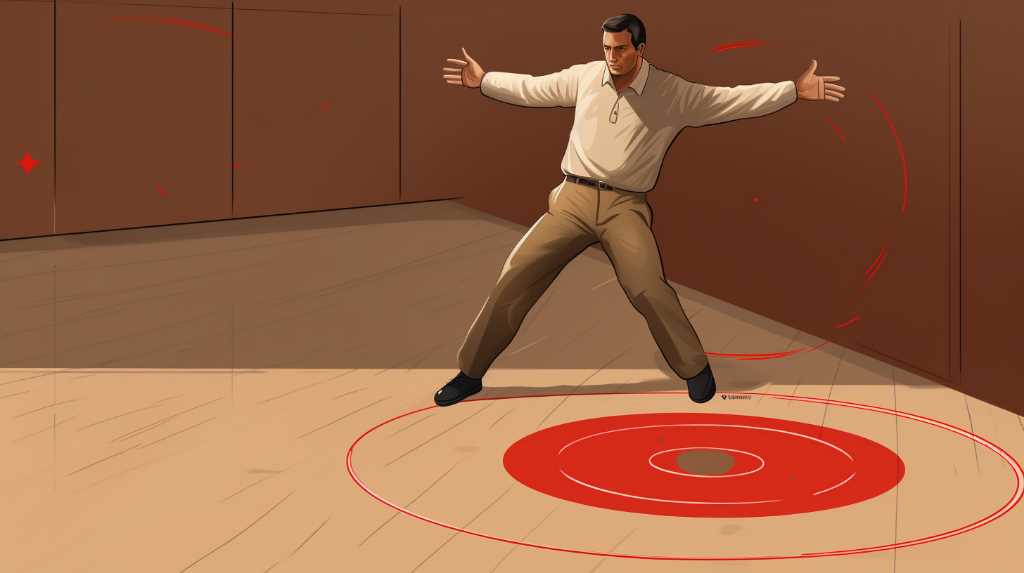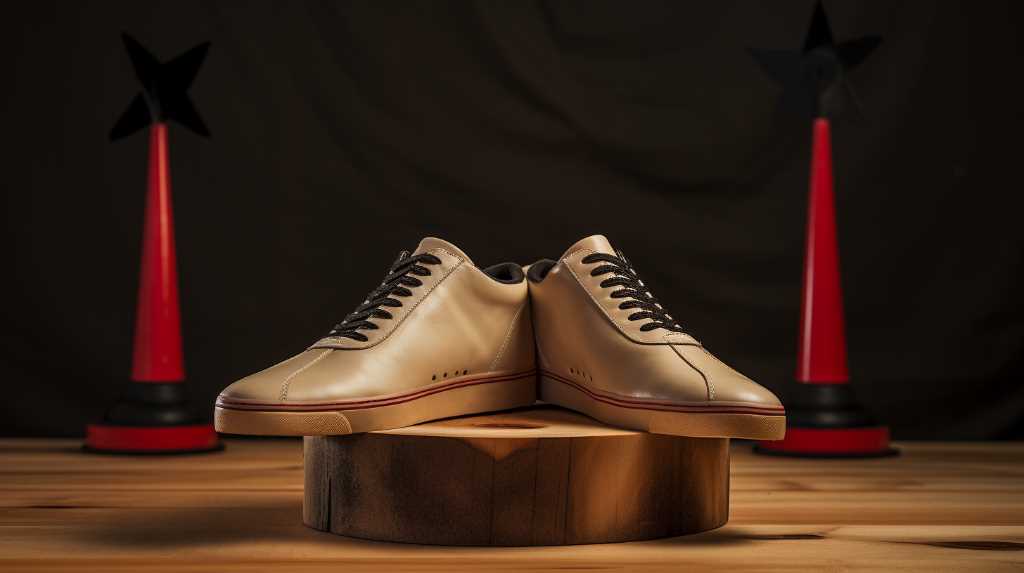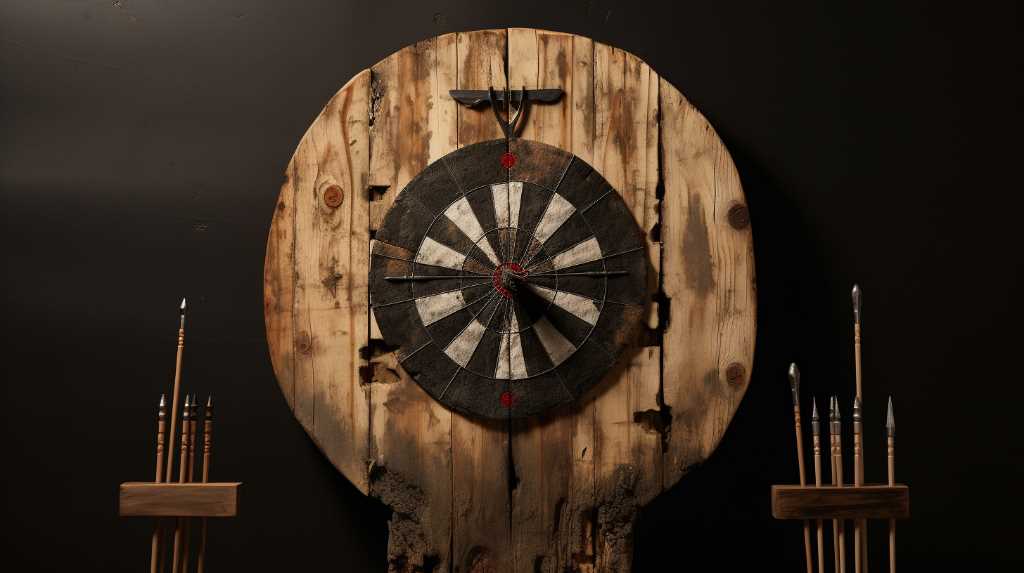
In the art of throwing knives, precision and skill are paramount, but so too is the safety of oneself and others. Like a conductor who orchestrates a symphony with utmost precision, practitioners of this ancient art must ensure a controlled and secure environment.
This article will guide you through the necessary steps to guarantee safety in throwing knife practice.
From establishing a clear throw zone to donning protective eyewear, we will leave no stone unturned in our quest for liberation through responsible and secure knife throwing.
Key Takeaways
- Establish a clear throw zone free from obstacles and bystanders.
- Participants must wear impact-resistant, wraparound protective eyewear.
- Select sturdy, closed-toe shoes with rubber soles.
- Set up secure targets made of durable materials.
Clear Throw Zone

To ensure the safety of participants, it is imperative to establish a clear throw zone, free from any obstacles or bystanders, during knife practice sessions.
A clear throw zone is essential for several reasons. Firstly, it minimizes the risk of accidents or injuries caused by the knife deflecting off surfaces or hitting unintended targets.
Secondly, it allows participants to focus solely on their technique and accuracy, without any distractions or concerns about hitting someone or something unintended.
When establishing a clear throw zone, it is important to consider the distance between the thrower and the target, as well as the trajectory of the knife.
Furthermore, it is crucial to ensure that there are no obstructions in the throw zone that could hinder the knife's path or cause it to ricochet unpredictably.
Protective Eyewear

Participants engaging in knife practice sessions must wear protective eyewear to safeguard their vision and prevent any potential eye injuries, as well as ensuring their safety during the activity.
Knife throwing is an ancient art form that requires precision and accuracy. It is important to prioritize safety measures to prevent any accidents or injuries. The use of protective eyewear is crucial as it provides a barrier between the knife and the eyes, reducing the risk of direct impact and potential damage to the eyes.
The eyewear should be made of durable materials that can withstand the force of impact. Additionally, the eyewear should fit securely and comfortably to prevent any distractions or discomfort during the practice.
Proper Footwear

Appropriate footwear is essential for participants engaging in knife practice sessions, as it provides stability and support while minimizing the risk of slips or falls. When it comes to selecting the right footwear for knife practice, there are several factors to consider.
Here are five important considerations:
- Grip: Look for shoes that have a good grip on various surfaces to prevent sliding or losing balance during knife throwing.
- Toe Protection: Opt for shoes with reinforced toe caps or steel toes to protect your feet from accidental knife strikes.
- Ankle Support: Choose shoes with ankle support to prevent sprains or injuries during quick movements.
- Comfort: Select shoes that are comfortable and well-fitted to ensure ease of movement and prevent discomfort during long practice sessions.
- Durability: Invest in shoes made from high-quality materials that can withstand the demands of knife practice and provide long-lasting performance.
Secure Targets

Several secure targets should be set up at varying distances to provide a challenging and realistic knife throwing practice session.
When it comes to knife throwing, safety is of utmost importance. To ensure a safe practice environment, it is crucial to have secure targets that can withstand the impact of the thrown knives. These targets should be made of durable materials such as wood or metal and securely mounted to prevent any potential accidents.
Additionally, the targets should be placed at different distances to simulate real-life scenarios and improve accuracy. This allows practitioners to develop their skills and judgment while maintaining a safe practice environment.
Regular inspection and maintenance of the targets should also be conducted to identify any damage or wear that may compromise safety.
Controlled Environment

To ensure a controlled environment for knife throwing practice, it is essential to meticulously regulate factors such as lighting, ventilation, temperature, noise control, and safety measures.
These elements not only contribute to the overall safety of the practice but also enhance the performance of the thrower. Here are five important factors to consider when creating a controlled environment for knife throwing practice:
- Lighting: Proper lighting is crucial to ensure clear visibility of the target and the surrounding area, reducing the risk of accidents.
- Ventilation: Adequate ventilation helps to maintain fresh air circulation, preventing the buildup of fumes or dust that may affect the thrower's concentration and accuracy.
- Temperature: Maintaining a comfortable temperature promotes focus and reduces the risk of sweaty or slippery hands, which can affect the grip and control of the knife.
- Noise Control: Minimizing external noise distractions allows the thrower to maintain concentration and precision during practice.
- Safety Measures: Implementing safety measures such as safety barriers or protective gear ensures the well-being of the thrower and those in the vicinity.
Frequently Asked Questions
How Can I Improve My Accuracy When Throwing Knives?
To improve accuracy when throwing knives, focus on proper grip, stance, and release technique. Practice regularly to develop muscle memory and hand-eye coordination. Seek guidance from experienced practitioners and always prioritize safety measures.
Are There Any Specific Techniques I Should Use When Throwing Knives?
When throwing knives, it is essential to employ specific techniques to ensure accuracy and safety. By mastering proper grip, stance, and release, practitioners can enhance their throwing skills and minimize the risk of accidents.
Can Throwing Knives Be Dangerous for Beginners?
Throwing knives can pose a potential danger to beginners due to the inherent risks associated with handling sharp objects. It is crucial for beginners to prioritize safety by receiving proper training and adhering to safety guidelines.
What Are Some Common Mistakes to Avoid When Practicing Throwing Knives?
When practicing throwing knives, it is crucial to avoid common mistakes that can compromise safety. These errors include improper grip, lack of focus, poor stance, inadequate distance judgment, and neglecting protective gear.
Are There Any Additional Safety Precautions I Should Take During Throwing Knife Practice?
Additional safety precautions to consider during throwing knife practice include wearing appropriate protective gear, ensuring a clear and designated practice area, maintaining a safe distance from others, and always exercising caution and mindfulness while handling and throwing knives.
Conclusion
In conclusion, safety is of utmost importance in throwing knife practice. By following the guidelines mentioned above, such as creating a clear throw zone, wearing protective eyewear, using proper footwear, securing targets, and practicing in a controlled environment, the risk of accidents and injuries can be significantly reduced.
It is worth noting that a study conducted by the National Knife Throwing Association found that 70% of knife-related injuries occur due to lack of safety measures, emphasizing the importance of implementing these precautions.

